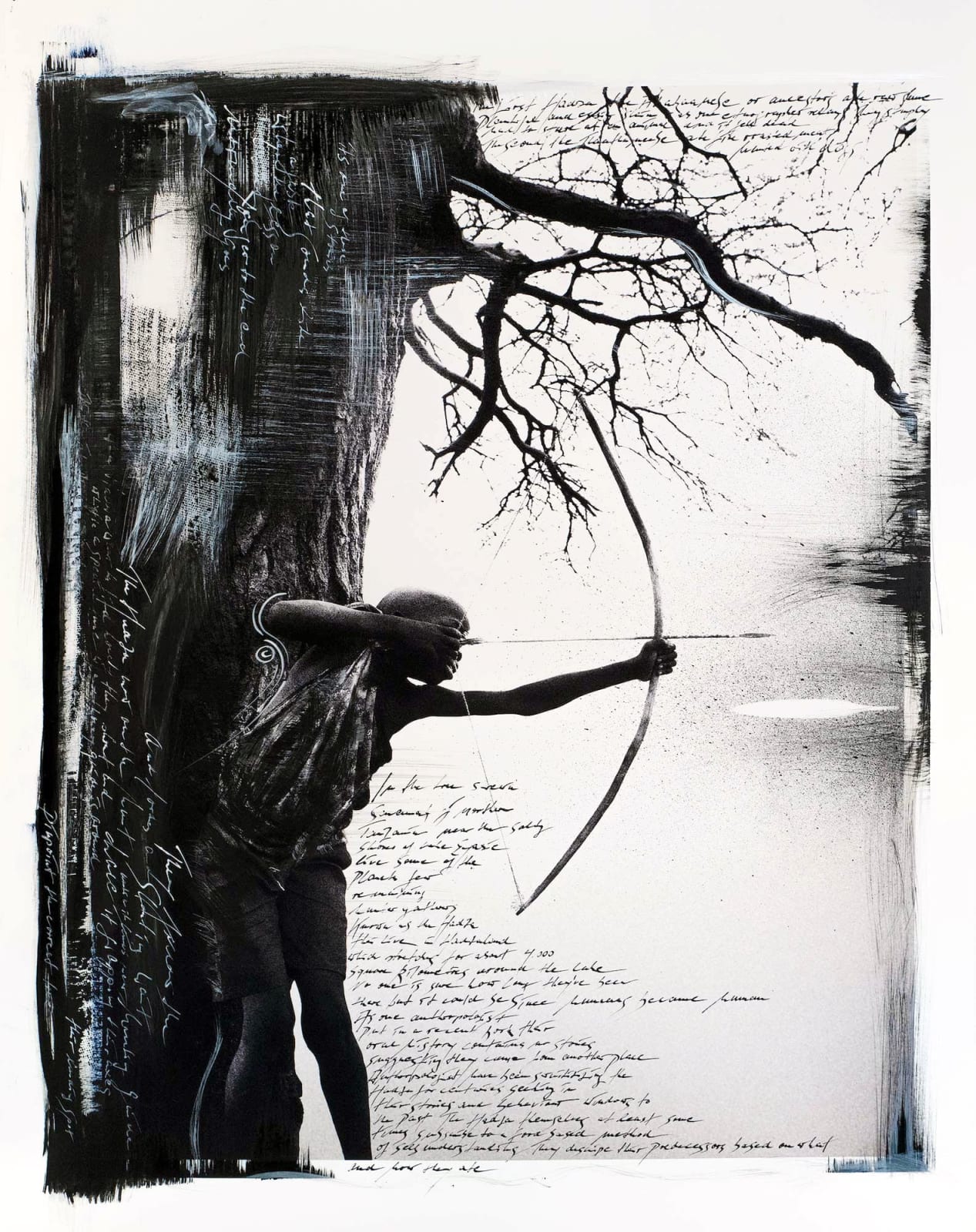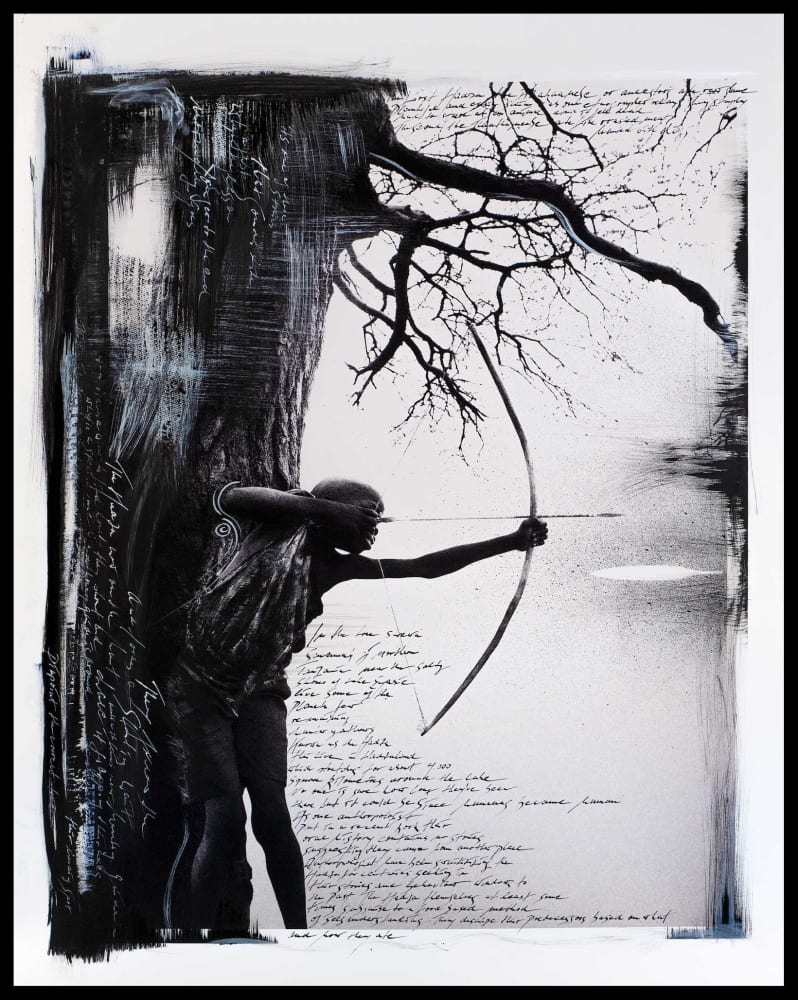FERMÉ du 28 novembre au 13 décembre
Joachim Schmeisser German, 1958
Hadzabe Hunter, 2020
Série: Hand Painted Photographs
Archival pigment Print on Hahnemühle Laid paper, Ink
100 x 75 cm
39 3/8 x 29 1/2 in
39 3/8 x 29 1/2 in
text handwritten by the artist
Plus d'images
Text: The Surprisingly Sticky Tale of the Hadza and the Honeyguide Bird, by Cara Giaimo 'In the tree-strewn savannah of northern Tanzania, near the salty shores of Lake Eyasi, live...
Text: The Surprisingly Sticky Tale of the Hadza and the Honeyguide Bird, by Cara Giaimo
"In the tree-strewn savannah of northern Tanzania, near the salty shores of Lake Eyasi, live some of the planet’s few remaining hunter-gatherers. Known as the Hadza, they live in Hadzaland, which stretches for about 4,000 square kilometers around the lake. No one is sure how long they’ve been there, but it could be since humans became human. As one anthropologist put it in a recent book, “their oral history contains no stories suggesting they came from some other place.”
Anthropologists have been scrutinizing the Hadza for centuries, seeking in their stories and behavior windows to the past. The Hadza themselves, at least at times, subscribe to a food-based method of self-understanding: they describe their predecessors based on what, and how, they ate. The first Hadza, the Akakaanebe, or “ancestors,” ate raw game, plentiful and easily slain–as one ethnographer relays, “they simply had to stare at an animal and it fell dead.” The second, the Tlaatlaanebe, ate fire-roasted meat, hunted with dogs. The third, the Hamakwabe, invented bows and arrows and cooking pots, and thus expanded the menu.
The Hamaishonebe, or “modern people”—the people of today—have a variety of meal strategies. Hadza hunting and gathering grounds are shrinking, under pressure from maize farms, herding grounds, and private game reserves, and some work jobs and buy food from their neighbors. But between two and three hundred of the 1300 Hadza remaining still survive almost entirely on wild foods: tubers, meat, fruit, and honey.
"In the tree-strewn savannah of northern Tanzania, near the salty shores of Lake Eyasi, live some of the planet’s few remaining hunter-gatherers. Known as the Hadza, they live in Hadzaland, which stretches for about 4,000 square kilometers around the lake. No one is sure how long they’ve been there, but it could be since humans became human. As one anthropologist put it in a recent book, “their oral history contains no stories suggesting they came from some other place.”
Anthropologists have been scrutinizing the Hadza for centuries, seeking in their stories and behavior windows to the past. The Hadza themselves, at least at times, subscribe to a food-based method of self-understanding: they describe their predecessors based on what, and how, they ate. The first Hadza, the Akakaanebe, or “ancestors,” ate raw game, plentiful and easily slain–as one ethnographer relays, “they simply had to stare at an animal and it fell dead.” The second, the Tlaatlaanebe, ate fire-roasted meat, hunted with dogs. The third, the Hamakwabe, invented bows and arrows and cooking pots, and thus expanded the menu.
The Hamaishonebe, or “modern people”—the people of today—have a variety of meal strategies. Hadza hunting and gathering grounds are shrinking, under pressure from maize farms, herding grounds, and private game reserves, and some work jobs and buy food from their neighbors. But between two and three hundred of the 1300 Hadza remaining still survive almost entirely on wild foods: tubers, meat, fruit, and honey.
Joignez-vous à notre liste d’envoi
* denotes required fields
We will process the personal data you have supplied in accordance with our privacy policy (available on request). You can unsubscribe or change your preferences at any time by clicking the link in our emails.














